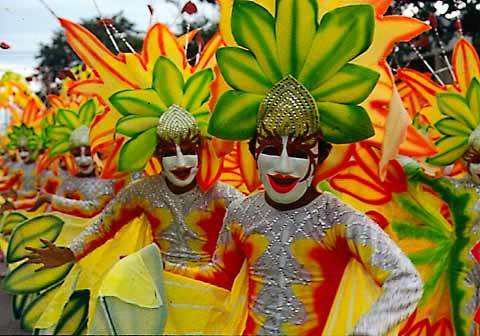 This is the 2nd week of our Herbal Medicine Chest. Check out the other posts in this series by clicking on the Herbal Medicine Chest page tab. Join us every Monday for the next several weeks to explore herbal preparations and put together your own Herbal Medicine Chest.
This is the 2nd week of our Herbal Medicine Chest. Check out the other posts in this series by clicking on the Herbal Medicine Chest page tab. Join us every Monday for the next several weeks to explore herbal preparations and put together your own Herbal Medicine Chest. Here's another group of herbal remedies that are alike, yet different. All are made using plant parts and water. So far, so good, right?
Let's talk about equipment...I like to use my french press to make herbal or loose leaf tea but I've also used a tea ball or mesh strainer. It's best not to use an uncoated metal pot or pan to steep any of the above preparations because the metal can alter the results or create a metallic taste. And we'll just stay away from plastic altogether. You'll need a kettle or pot to boil water, a teapot or other glass container with a close but not tight fitting lid. Or cover a glass canning jar with a small bowl. The reason for this is to allow the steam evaporation to condense and return to the container rather than be lost in the air but not build up pressure that might break the jar if it's sealed tight.
Click on the Mountain Rose Banner below to view the tea equipment they offer.
The usual dosage for infusions and decoctions is 1/2 cup 3x / day. It's best to sip rather than chug to allow your digestive tract to absorb the benefits. Especially in cases of nausea, vomiting and diarrhea. For weak individuals, elderly, low body weight or children, reduce dosage. We'll be making enough for one day. Store in the refrigerator and re-warm gently or drink cold. Make a fresh batch each day.
Both infusions and decoctions can be used internally, depending on the herb, either as herbal "tea" or added to other remedies and both can be used in many ways externally. We'll cover these in the weeks to come.
As with all herbal remedies, be sure it's safe to use the herbs in question during pregnancy. "When in doubt, don't."
Now let's check out the differences.
Tea - First, there are the kinds of tea most folks are familiar with; Green, Black and Oolong. All three are made from the leaves of the Camellia sinensis tree and all, in them selves, are strong medicine with digestive, stimulant and astringent properties. By now you've heard of the antioxidant properties of green tea which has been shown by Eastern research to appear to reduce the risk of some cancers. Brewing tea is an art in itself but we can talk about that later. I've invited a guest author to post a report on tea .
But what I'm really referring to here is tea as an herbal drink for pleasure or for its soothing, healing properties. Both infusions and decoctions could be considered "tea", actually tisane if it doesn't contain any Camellia sinensis. Herbal tea is much more mild, although still full of beneficial healing properties, but could not be considered strong enough to be an infusion or decoction.
Herbal Tea - usually made with leaves, flowers and non-woody stems
Place 1-2 tsp of dried herb (3-4 tsp of fresh herb) for each pint of water (as the menstruum) in your press, tea ball or strainer.
Heat water until almost boiling (because the essential oils in herbs contain much of their healing power, avoid using boiling water which will cause a rapid evaporation and steam dispersion of these oils.
Pour over herbs - steep, covered for 3-5 minutes.
You can make your own tea blends with homegrown and purchased herbs or buy some ready to brew. Traditional Medicinals and Yogi teas offer some great blends that are handy when sickness strikes. We really like the Throat Coat, Breathe Easy and Dandelion tea from Traditional Medicinals.
Also, Mountain Rose herbs offers lots of teas and herbs, as well as equipment, to make your own. Check it out...

Hot Herbal Infusion - from the Latin word infundere which means "to pour in" - also usually made with leaves, flowers and non-woody stems
1 oz. of dried plant material (2 oz. fresh herbs) per pint of menstruum (in this case water) The amount of liquid isn't as important as the amount of plant material.
Following the same procedure as for tea, allowing the infusion to steep, covered for 15-20 minutes.
Strain and press plant material (marc) to remove any retained water.
Cold Herbal Infusion - Plant materials and quantities are the same as for hot infusions.
Place the herbs in a large glass jar.
Cover with room temperature water and let it sit 6-8 hours or overnight. Or in the sun for 2-3 hours.
Strain and press plant material (marc) to extract retained water.
Some favorites:
marshmallow for bronchial disorders
celery for gout and rheumatoid arthritis
borage combined with fennel to stimulate milk
calendula inflammation of the esophagus
green tea after meals to prevent tooth decay
black tea for diarrhea and food poisoning
oolong tea after a meal high in fat to reduce cholesterol (The Chinese are onto something here!)
cayenne (only a pinch) for colds and chills or to stimulate digestion
chamomile for irritable bowel, indigestion or at night for insomnia or anxiety
wild strawberry leaves for diarrhea and combined with celery seed for gout
lavender for colic and excitability in infants use mild infusion (1/4 normal)
flax seed and slippery elm for sore throat and coughs add honey and lemon
raspberry and blackberry leaf for mild diarrhea, sore throats and mouth ulcers
rosemary for colds and flu, also indigestion
elder flowers for fever and mucous conditions of the URI including hay fever, mouth ulcers, sore throat
stinging nettle as a spring tonic or for gout
mullein for sore throats and cough, encourages sweating
Decoction - from the Latin word decoquere - "to boil down" - this method is used for roots, seeds, berries, bark and twigs, any plant material that doesn't contain volatile or essential oils. The medicinal benefits we're going for here are the bitters and resins that yield healing properties.
Place plant material and 2 1/2 cups water in a pan and heat to simmer. Simmer 1 hour or until reduced by 1/3. Strain.
Favorites:
Echinacea root for immune support and infections
Fennel for abdominal pain and colic
Chickweed as a cleansing toinic
Dandelion root for gout, constipation and liver sluggishness
Coltsfoot for coughs and phlegm, colds and flu
Ginger for chills and cold, reduces phlegm
If you'd like, you can grab my button from the sidebar to share with others. Just copy and paste the html text onto your site or post.
Great news! If all is working properly, you should be able to add to the Herbal Medicine Chest by sharing your favorite Home Remedy recipes.
Folks, this linky is closed. You are welcome to share your herbal recipe in the comments section below. Please scroll down to see what others have shared.
This article is a featured post on GNOWFGLINS blog hop Simple Lives Thursday #54. Check it out for more tips on a healthy, whole foods diet and other simple living ideas.
Simple Saturdays #3
Strangers and Pilgrims on Earth
Wildcrafting Wednesday #107
Simply Homemaking
Homestead Revival Barn Hop
Simple Lives Thursday
Wildcrafting Wednesday
Monday Mania
 |
| Shared with Fat Tuesday Hop @ Real Food Forager |
 |
| Shared with Jenny and friends @ Alphabe-Thursdays |






I'm just beginning to learn about herbal remedies, but have found "plain old garlic" to be a great remedy to ward off colds. I usually chew part of a clove when I begin to feel something coming on, and I can generally get my children to drink a honey, lemon and garlic tea for their cough.
ReplyDeleteThanks for that info. I'm very fond of looking for other alternatives to fight certain diseases. It's really good to see your list of herbal medicine products.
ReplyDeleteHello Sharon!
ReplyDeleteHere is the Elderberry Syrup Recipe to add to the hop! Thanks for inviting me over and for hosting this wonderful carnival :-)
Thrilled to have found your blog! I have a strong interest in herbal medicine and for my master's research one of my major papers was a study of herbs used by midwives and other medical women during childbirth in Early America. Fascinating stuff- loved pouring through all of the eighteenth century herbals, recipe books, and other primary sources. It's amazing that this special "coded" knowledge only known among women and passed down through generations has been largely lost to the general public in today's era.
ReplyDeleteThanks so much for sharing, Melissa. I'm going to link your recipe to today's post.
ReplyDeleteHi Megan. So happy to have you visit me here. I'd love to read your paper if you'd like to share. Would that be possible? I think it's so interesting to learn how herbs have been used in the past.
This post has taught me alot.
ReplyDeleteThis was a very interesting and useful post! Thank you so much!
ReplyDeleteWow! There's so much to learn about tea!
ReplyDeleteVery useful. Thanks for posting. I'll reference if I ever need it.
ReplyDeleteNew follower.
Yes I'd be happy to send you a copy of the paper- it's been a while since I have done anything with it so it might be a few days before I can get it to you!
ReplyDeleteYou have some clever ideas here...I never would have thought of a coffee press.
ReplyDeleteDo you have anything other than clove that might help dry socket?
I had an extraction a few days ago and it is pretty wicked.
Thanks for a terrific stop on our little journey through Alphabe-Thursday's letter "T".
This was awesome.
A+
Thanks for all the kind comments!
ReplyDelete@ Jenny - I will field this by email.
Thanks for all the info on tea!
ReplyDeleteI’ve tried all sorts of coughing syrups, believe me, but none of them helps. Even though Nin Jiom Pei Pa Koa www.geocities.jp/ninjiom_hong_kong/index_e.htm does not eliminates the cough I like to stick to this chinese syrup I’ve been taking since I was a kid: Nin Jiom Pei Pa Koa. My grandfather is chinese, so I guess my mom got the advice from him. I was really surprised when I found that chinese market selling it here in Belgium. It does have a refreshing, soothing, sweetening effect…as long as it lasts…then back to coughing mode.
ReplyDeleteWhat a wonderful post! I love herbs and finding out new ways to use them for health benefits is even more wonderful! Thanks for linking this up for "Simply Homemaking Tuesdays". I'm sure my readers will enjoy this as much as I have. :0)
ReplyDeleteBlessings,
ESTHER
Our Simple Country Life
Your posts are always so educational! A wonderful resource- I love them!! I'm fascinated by herbal medicine, but happily my family is always so healthy that I have little opportunity to learn on them!
ReplyDeleteI am just starting to learn about all of this. Thanks for sharing.
ReplyDelete~Lynn
This was great info, well presented. We shared it with our FB readers at homesteadlady.com.
ReplyDelete@Tessa ZundelThank you
ReplyDeleteso much!
That's the first I have ever heard of celery for arthritis. I will be trying that one out for sure. Thanks for sharing!
ReplyDelete